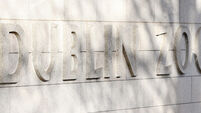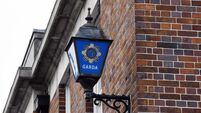Garda in-vehicle device leads road safety drive
Uninsured and untaxed drivers as well as motorists engaged in other common road traffic offences like speeding and using a mobile phone while driving now face an increased risk of being detected, courtesy of An Garda Síochána’s new in-vehicle equipment.
The chief armoury in the Garda’s on-board system is Automatic Number Plate Recognition (ANPR) technology which allows cameras at the front and back of vehicle to scan the registration plate of passing and stationary vehicles.
Footage from such cameras already provides a staple diet for many TV programmes featuring real-life police action in other countries.
The equipment, which is linked up to real-time databases that provides information on insured, taxed and stolen vehicles, can scan up to six licence plates per second.
Once the on-board computer detects the absence of a licence plate from such data banks, gardaí in patrol cars are alerted to the fact that a vehicle might not be compliant.
The other main weapon for members of the Garda Traffic Corps is the Puma speed recorder which calculates the average speed of a vehicle between two fixed points. Unlike earlier similar equipment, the location of Puma devices cannot be detected by radar scanners as they are based on modern, laser technology.
During a patrol with members of the Garda Traffic Corps in Dublin yesterday, the Irish Examiner was able to witness the potential of the new equipment as a significant road safety tool.
Dublin motorists appear very law-abiding as the Garda patrol car driven by Sergeant John Ryan travels 10 miles from its base at Dublin Castle to the Celbridge interchange on the M4 without incident.
One female Volvo driver blissfully unaware of the high-profile Garda vehicle records an average speed of 84km/h over a lengthy stretch of a 80km/h zone, but she is allowed to continue on her way.
Despite the absence of any excessive speeding or other offences, the cameras are continuously recording all passing traffic so that gardaí can retrospectively examine footage in the event they subsequently need proof of a vehicle’s whereabouts.
However, within seconds the computer activates the patrol car’s warning signal to alert gardaí that an O8-D-registered white truck might be uninsured.
After instructing the van driver to pull in on thehard shoulder, Sgt Ryan’s colleague, Garda Dominic Noonan quickly establishes that the vehicle’s owner has a valid insurance disc.
“Essentially, he recently changed insurer but his details haven’t yet been updated on the system by his new insurer,” explained Gda Noonan.
However, Sgt Ryan points out that gardaí have the power to immediately seize vehicles which are uninsured.
“Our main focus is on speeding and impaired driving because they are the offences which pose the greatest risk to road safety,” observed Sgt Ryan.
Overall, the new equipment has also proven a major boost for conviction rates as gardaí estimate that 95% of offenders are content to plead guilty once they become aware their misdemeanours have been captured on camera.












